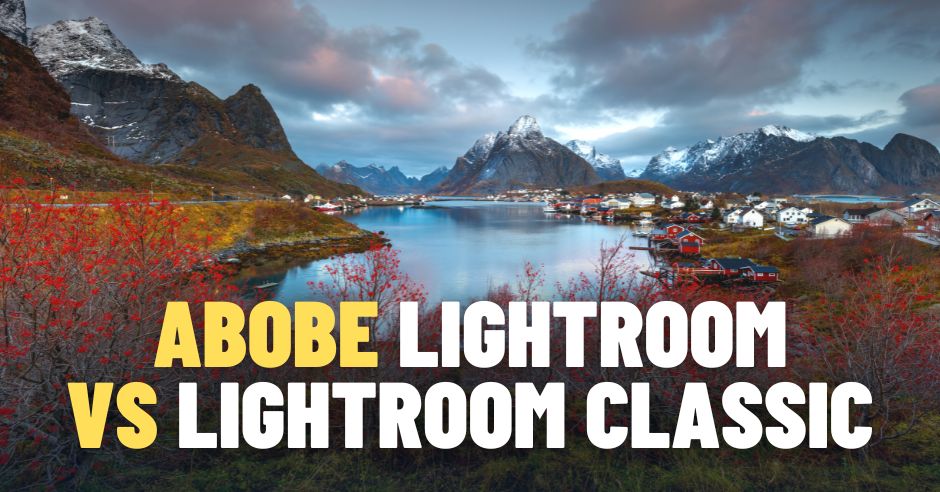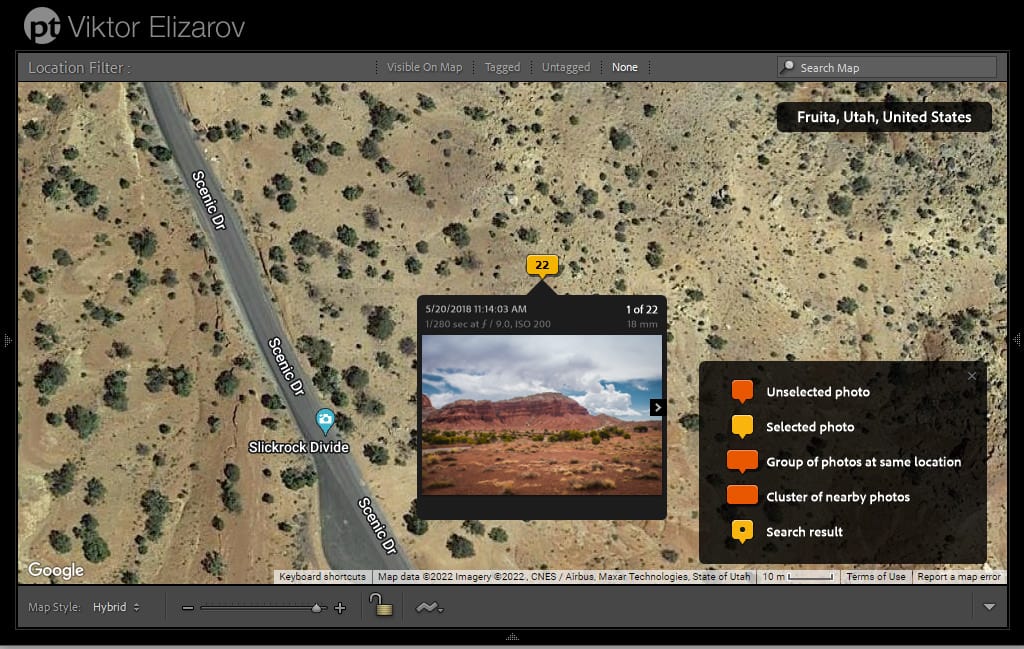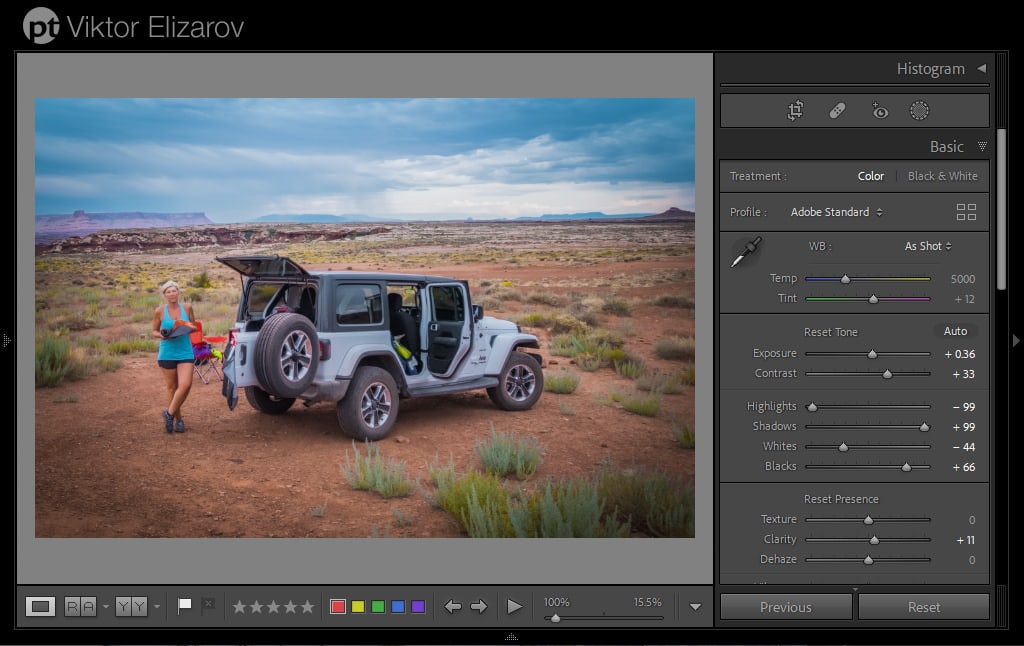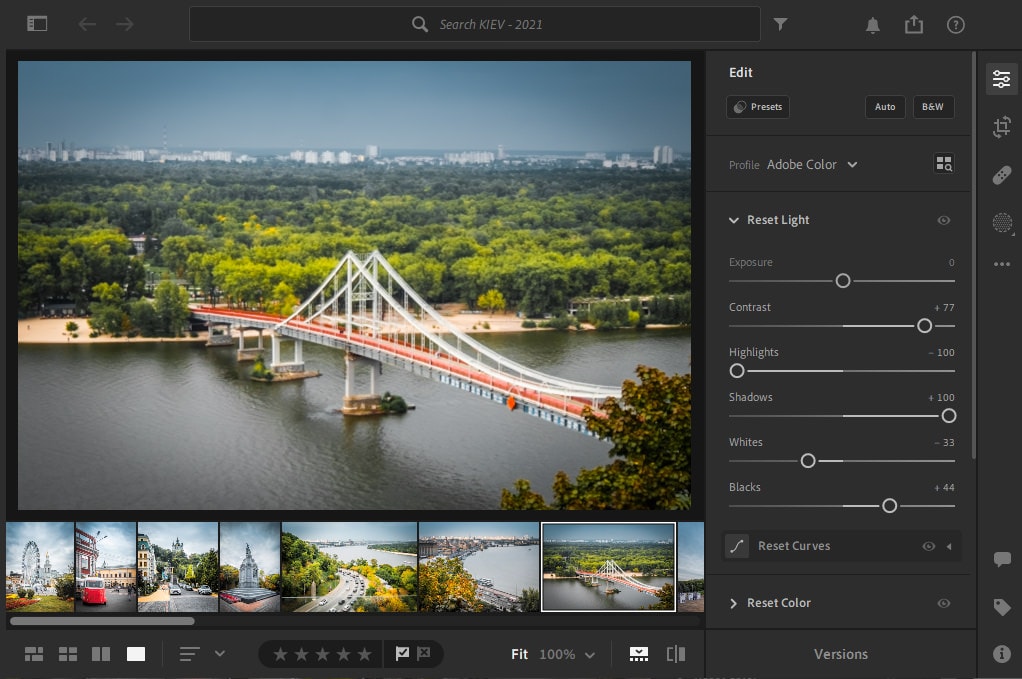Lightroom Basic vs Lightroom CC that’s the query.
Lightroom Basic and Lightroom CC are each Adobe software program merchandise designed for managing and modifying digital images. They share some widespread options, however there are additionally vital variations between the 2.
On this article, I’ll evaluate the 2 variations of Lightroom and make it easier to resolve which one is best for you.


The primary variations between Lightroom Basic and Lightroom CC are in storage strategy and have units. Lightroom Basic depends on native storage, with the picture library residing on the person’s laptop and it affords a extra full function set, together with superior modifying and organizational instruments. Lightroom CC, adopting a cloud-centric strategy, shops images within the Adobe Inventive Cloud and affords a simplified toolset, preferrred for customers prioritizing mobility and accessibility throughout units.
Historical past of Lightroom
Do you know that the unique Lightroom’s title is Adobe Photoshop Lightroom?
Adobe launched Photoshop in 1990, turning into the world’s commonplace graphic modifying and compositing utility.
With the explosion of digital pictures at the start of the century, Adobe realized that Photoshop urgently wanted help for a brand new file format of digital pictures – RAW photographs.
In 2003 Adobe accomplished the event of the Adobe Digital camera Uncooked (ACR) utility as a plugin for Photoshop. It allowed photographers to edit natively RAW photographs and rasterize them for additional manipulation in Photoshop.
However the brand new difficulty emerged virtually instantly. Due to the low price of taking further pictures in digital pictures, the variety of images taken with digital cameras skyrocketed. However Photoshop was not outfitted to deal with massive picture libraries as a result of it didn’t have digital asset administration (DAM) module.
To shut the hole, Adobe created a brand new utility to accompany Photoshop, aiming to simplify the administration of the excessive quantity of digital images.
The idea of Lightroom was born.


In 2006 Adobe launched the primary model of Lightroom. It constructed the Library module from scratch to deal with digital asset administration (DAM). And for the Develop module took the Adobe Digital camera Uncooked (ACR) plugin from Photoshop and constructed a brand new interface round it.
The appliance was given the title Adobe Photoshop Lightroom.
The early iteration of Lightroom hardly had any modifying capabilities. You can regulate primary parameters corresponding to publicity, brightness, shade stability, distinction, and that was about it. It didn’t even have crop performance. The concept was to make use of Lightroom for picture group largely and, for superior modifying, to make use of Photoshop.
Once I began utilizing Lightroom in 2006, I did 90% of my picture modifying in Photoshop. I used Lightroom to handle my picture library and to appropriate publicity; I performed the remainder of the workflow in Photoshop.
However through the years, Adobe added a sequence of modifying instruments, priceless functionalities, and modules to Lightroom.
By the 12 months 2015, when Lightroom 6 was launched, I hardly used Photoshop in any respect. Due to the implementation of assorted picture modifying instruments, I might full 90% of my digital workflow in Lightroom. The necessity for Photoshop diminished.
It was easy occasions; we had just one model of Lightroom.


However in 2017, Adobe determined to spice issues up and make the whole lot extra complicated.


They launched a brand new model of Lightroom, which no person anticipated and requested for, below the title of Lightroom CC (Inventive Cloud). On the similar time, they renamed the unique Lightroom to Lightroom Basic CC (Inventive Cloud).
The introduction of a brand new cloud-based model of Lightroom was complicated, however the authentic model’s renaming took it to a different stage. Primarily based on leaked data from Adobe, the unique plan was to rename the unique model to Lightroom Skilled and to provide the Lightroom Cloud title to a brand new model. However the huge brains from the advertising division thought the Skilled title would suggest that the brand new Lightroom isn’t for professionals, lessening its attraction.
That is how we find yourself with Lightroom Basic CC.


However the title Lightroom Basic made many photographers consider that it indicated a legacy program and that Adobe would cease creating it. And because the new model of Lightroom CC was not outfitted with many options, it precipitated panic within the picture neighborhood.
I hoped that over time, Adobe would merge two variations into one, and we’d take pleasure in a quick and responsive program with a contemporary interface that has all performance of the unique Lightroom. However it by no means occurred.
In 2019 the ultimate renaming occurred. Adobe dropped CC (Inventive Cloud) from the names of each variations.
As of writing, we now have two variations of Lightroom: Lightroom Basic and Lightroom. And Lightroom is offered in 3 variations: Desktop, Cell, and Net (browser-based).
This text goals to clarify the variations between Lightroom Basic and Lightroom and what benefits and downsides every model has.
Lightroom Basic vs Lightroom CC: the Principal Variations
1. Picture Storage: Cloud vs Native
The primary distinction between Lightroom Basic and Lightroom (former Lightroom CC) is the way you retailer your images.
Lightroom shops images within the cloud. Each time you import new butch of images, Lightroom uploads them to the cloud. You’ll be able to entry the complete variations of your photographs from all linked units.
With Lightroom Basic, you retailer all of your imported images domestically on the pc arduous drive. However you continue to can synchronize particular person Galleries with cell units utilizing Adobe Inventive Cloud.
2. Photograph Group
Lightroom Basic has a modular construction. The Library module serves the perform of superior digital asset administration (DAM). You’ll be able to arrange your photographs utilizing folders, galleries, and tags. Plus, you possibly can group images in digital stacks and create digital copies.
Lightroom (former Lightroom CC) doesn’t have a Library module; you arrange and develop your images in a single person interface. Despite the fact that I like this strategy, it leads to restricted picture group capabilities.


In Lightroom, you arrange photographs utilizing digital albums, plus this system closely employs AI performance, attempting to determine the content material of your images and tag them routinely.
3. Importing Photographs
I at all times was vital of the Import module of Lightroom Basic due to its complexity. Usually it turns into a significant problem for photographers simply beginning to study this system.
In Lightroom CC, the import module doesn’t exist, and there are not any import choices in any respect. You can’t even choose what uncooked recordsdata to import and what to keep away from. There are not any renaming, metadata, or watermark functionalities. You dump the photographs into this system and resolve what to do with them later.
4. Modifying and Growing Photographs
In recent times Adobe beefed up the modifying instruments in Lightroom (former CC), and they’re virtually on par with Lightroom Basic. However it nonetheless lacks some functionalities I exploit in my workflow.
Lightroom doesn’t have important instruments corresponding to Calibration, Snapshots, and Historical past. It’s a deal breaker for me.
5. Exporting Photographs
When Lightroom was launched, it solely supported JPEG export format. Despite the fact that the export panel has extra exporting choices, it isn’t even near the Export module of Lightroom Basic. It isn’t even known as an export course of; it’s the Share performance.
6. Plugins Assist
One of many greatest benefits of Lightroom over competing purposes is the help for plugins. The plugins mean you can prolong the performance of Lightroom by putting in third-party add-ons. The Lightroom Basic even has a Plugin Supervisor the place you possibly can deal with the entire put in plugins.
In my pictures, I exploit a good variety of plugins corresponding to SmugMug, Flicker, JPEGmini (picture compression), and several other plugins that assist me with preset growth.
Lightroom doesn’t help plugins in any respect. You can’t even set up plugins developed by Adobe.
7. Lacking Modules
Lightroom Basic has 7 modules: Library, Develop, Map, E-book, Print, Slideshow, and Net. Despite the fact that I don’t use the E-book, Print, and Slideshow modules, I do know that many pictures companies closely actually on these modules. And they don’t exist in Lightroom.
In my case, I like the Map module. I’ve all my journey images mapped to the interactive map and may visually assess the areas I visited and photographed. I additionally use the Map module for planning my journeys.


Benefits of Lightroom Basic
- It has extra superior instruments and functionalities.
- You don’t depend on a quick Web connection to have the ability to synchronize photographs and edits.
- It has an infinite quantity of instructional assets for all ranges.
- Lightroom Basic means that you can handle movies. It even affords some restricted video modifying performance.
Disadvantages of Lightroom Basic
- It’s sluggish. The event of Lightroom Basic began greater than 2 many years in the past. It depends on previous and outdated applied sciences. Adobe struggles to optimize its pace.
- The modular construction isn’t preferrred for person expertise.
- It’s tougher to study.
- You need to implement a backup technique as part of your digital pictures workflow.


Benefits of Lightroom CC
- It’s quick and snappy.
- It has a extra fashionable and intuitive person interface.
- Simpler to study
- Automated backup on the cloud.
Disadvantages of Lightroom CC
- The $9.99 Adobe Inventive Cloud Images plan contains solely 20Gb of storage.
- It turns into costly when you’ve got a photograph library bigger than 1TB. In my case, my picture library is 6TB huge, and it could price me $60 per thirty days for cloud storage solely.
- In a nutshell, it’s a strip-down model of Lightroom Basic.


Who Ought to Use Lightroom Basic?
Lightroom Basic is for everybody severe about pictures and desirous to study this improbable pastime’s ins and outs.
And in case you are an expert photographer, you already know there isn’t any escape from a submarine, and the lightroom Basic is the one approach to go.
Who Ought to Use Lightroom CC?
To be sincere, I’m struggling to pinpoint who’s the audience for stand-alone Lightroom. It’s designed for photographers with picture libraries smaller than 1T and closely depends on cell pictures. However then once more, you could be a cell photographer and synchronize your images taken with cell units with Lightroom Basic; that is what I do.
See additionally: Learn how to Save Preset in Lightroom Cell
I don’t see any motive to subscribe to the Lightroom Plan ($10/month) as a substitute of the Images Plan ($10/month), which comes with all variations of Lightroom plus Photoshop.
I see the usefulness of Lightroom in case you are beginning to study pictures. You subscribe to the Images plan and start the educational course of with Lightroom as a result of the educational curve is much less steep. And over time, you turn to Lightroom Basic.
Lightroom CC vs Lightroom Basic | Last Ideas
Once I evaluate Lightroom Basic ve Lightroom CC, I ask myself a query: Can I run my pictures enterprise utilizing solely Lightroom Basic? And the reply is particular YES.
However I cannot carry out all pictures organizational, modifying, and publishing duties utilizing Lightroom CC solely. I nonetheless want Lightroom Basic or Photoshop.
I believe Adobe ought to merge two variations of Lightroom right into a single utility and cease complicated thousands and thousands of Lightroom customers.

